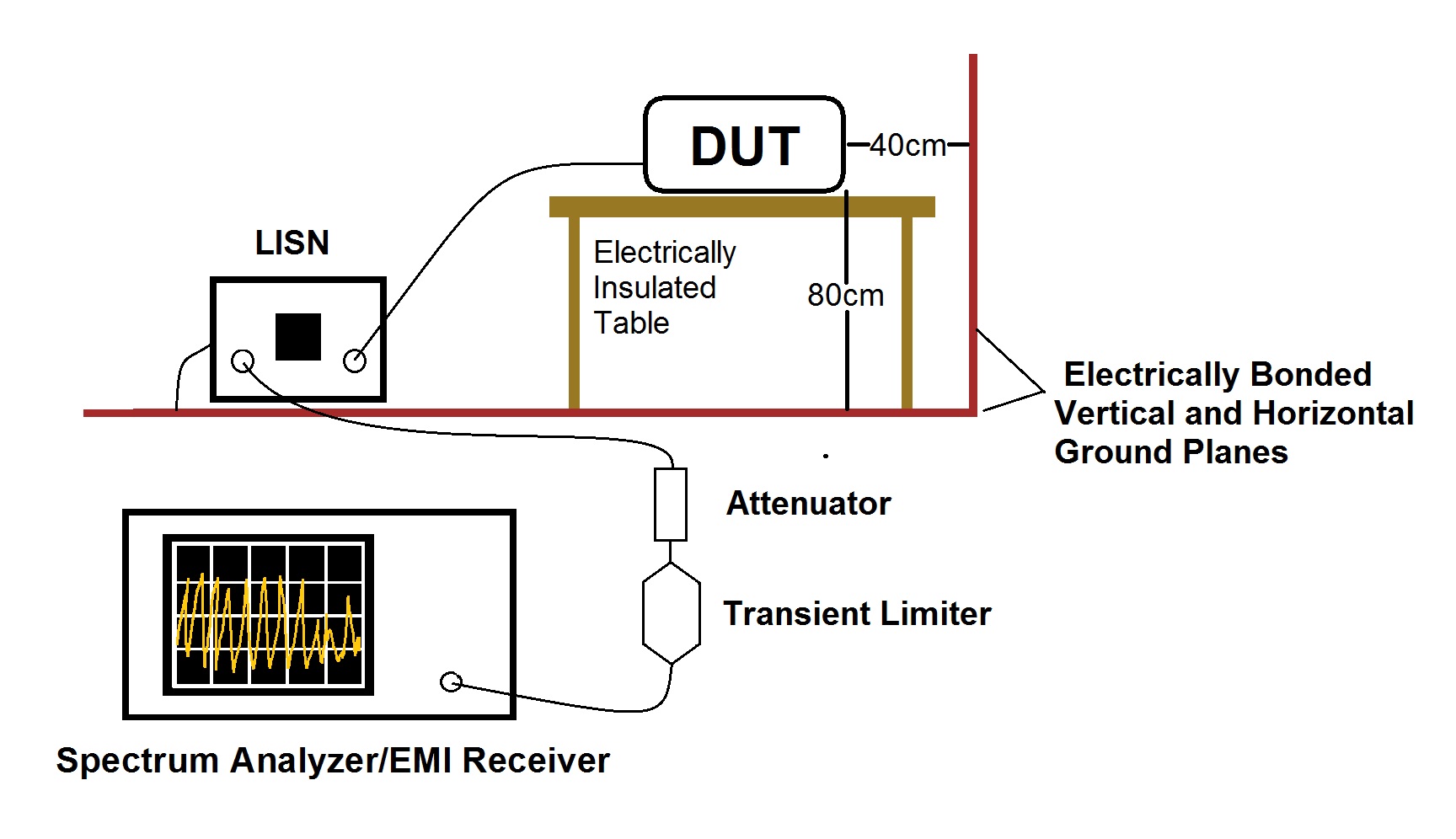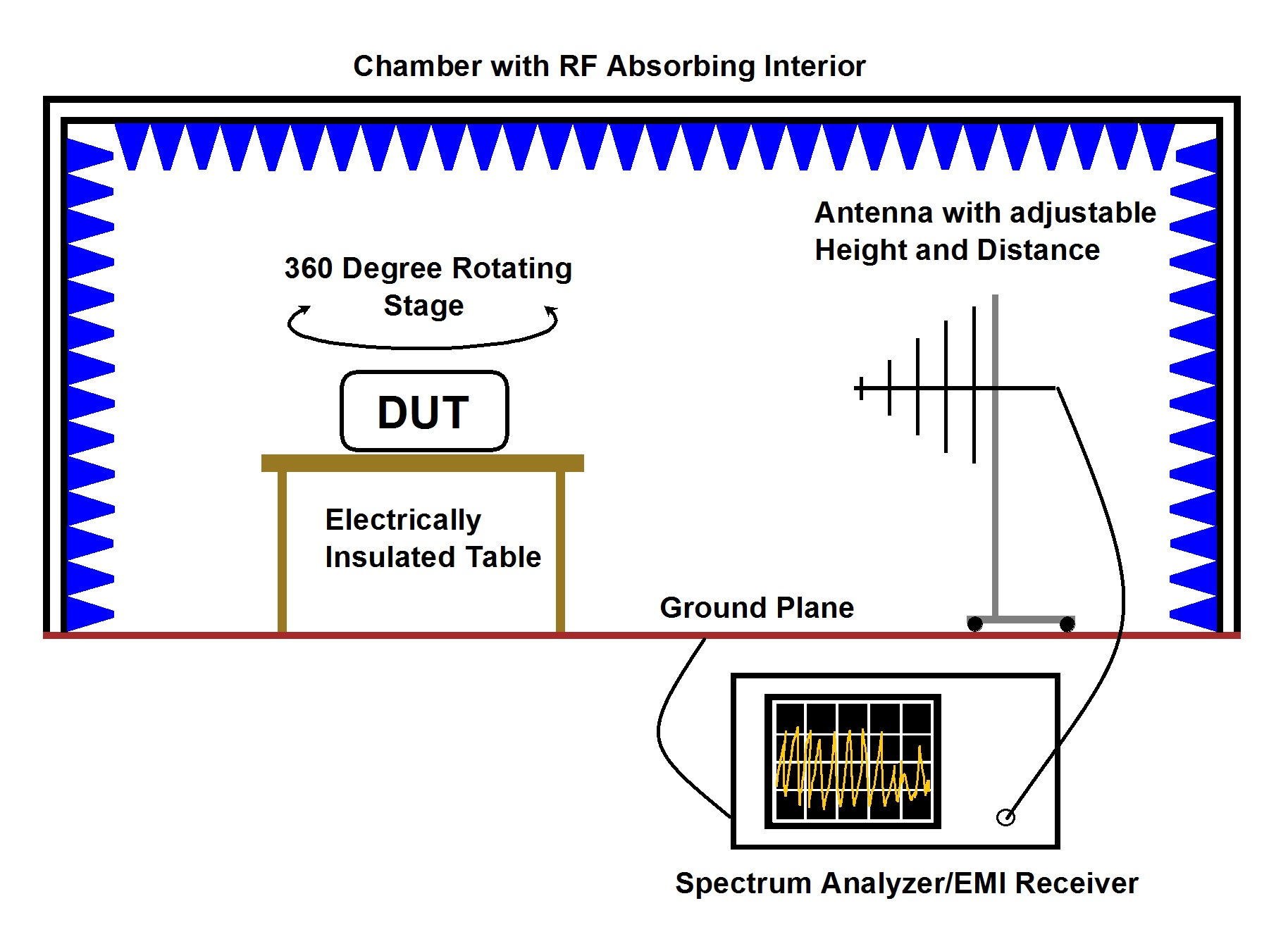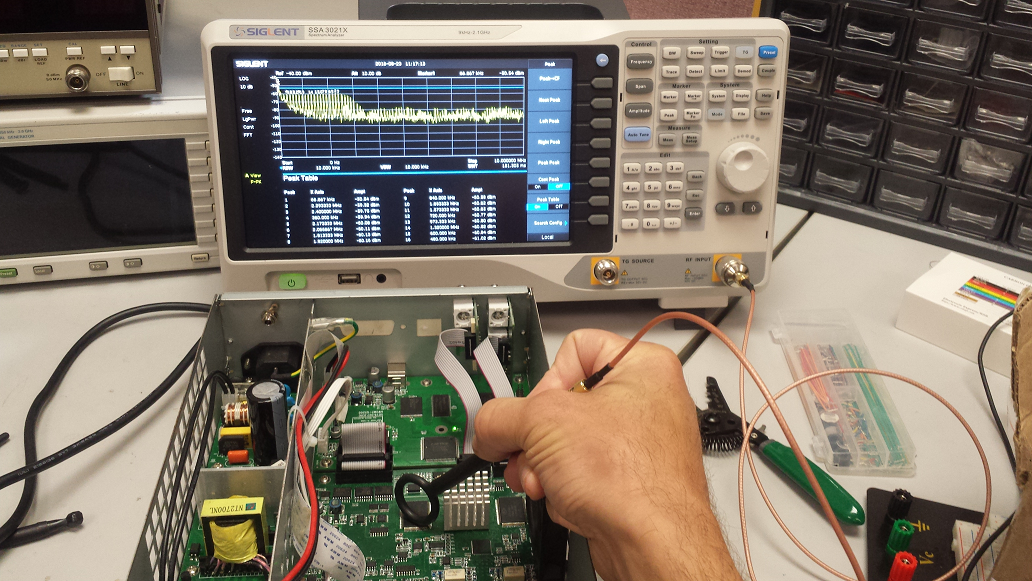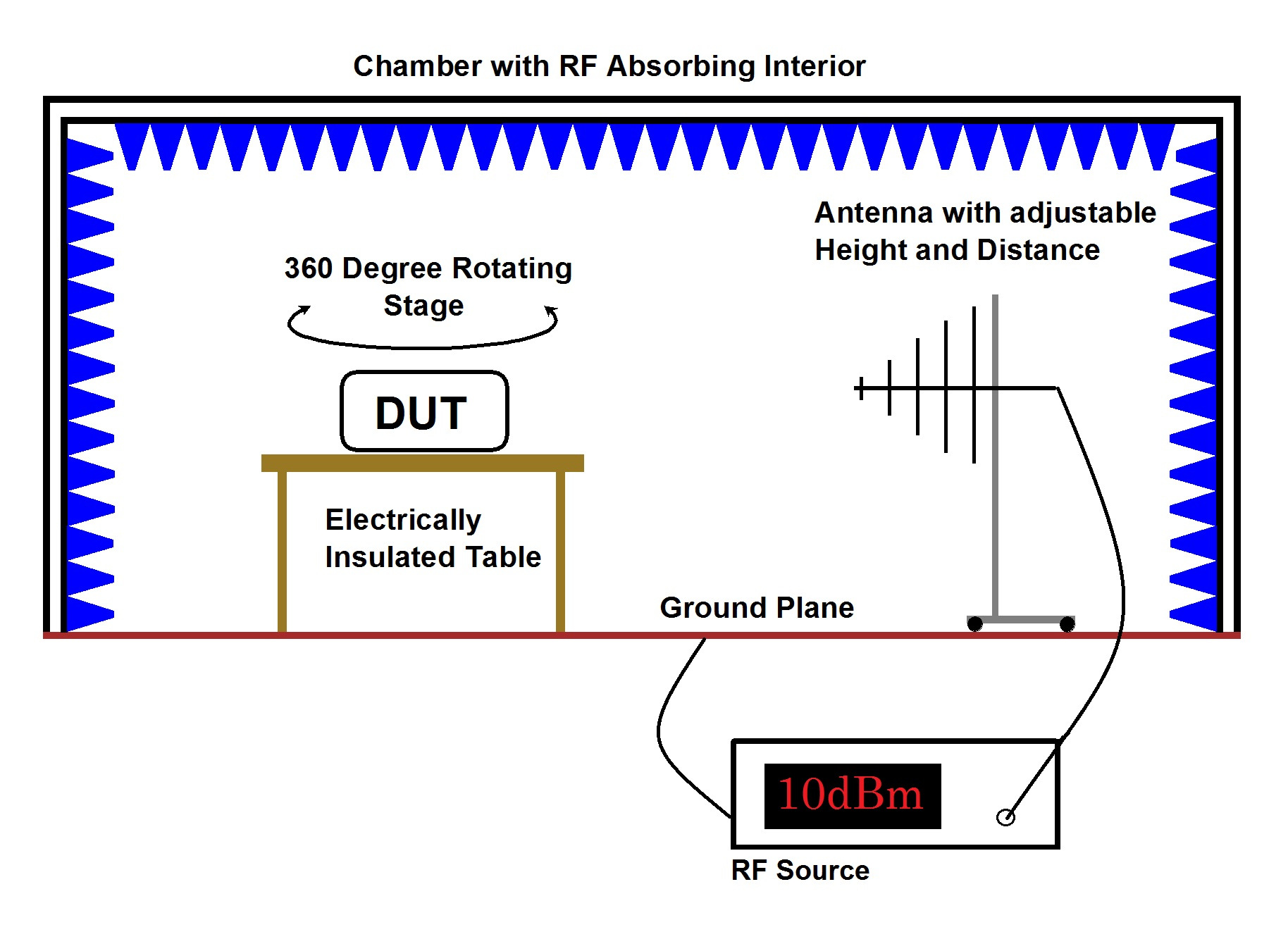Designing a product to meet customer application requirements is only part of the story. In many cases, the product must also meet or exceed federal and local laws for product safety and performance. One area of concern common to many designs is the amount of electromagnetic radiation a product can legally introduce to the surrounding environment.
Electromagnetic Compliance (EMC) testing is the study of the RF output (intentional or unintentional) of a product and evaluation of whether a device meets the rules set forth by the appropriate governing body. Products that do not meet these limits are illegal to sell and doing so may bring legal action upon the seller.
EMC testing can be complex and specialized, causing many companies to choose to have compliance testing performed by professional test labs. For final certification, a qualified and certified test lab is always recommended, but there are steps that you can take to help minimize the test time at the lab. This may also provide some design tricks to minimize EMC with your next generation of products.
European EMC standards are derived from international standards, created by standardization organizations like ISO or IEC (with its committees CISPR, TC77, ACEC). The European organizations CEN, CENELEC and ETSI define and maintain the regulations for allowable electromagnetic radiation. The standards are divided into several product specific categories, namely listed under the number EN550xx. Alternatively also CISPR standards can be referred.
Click to learn more about European Standards – CEN-CENELEC (cencenelec.eu)
If a product is within the limits of its product category, it is said to be compliant with the rules of its category. Now, let’s take a look at pre-compliance in more detail.
Precompliance Basics
Full compliance testing requires specialized equipment, techniques, and environmental controls that may not be available to every engineer.
Luckily, a few basic tests and standard equipment can be used to identify problematic design areas before you pay for testing at the compliance lab. This area of testing is known as pre-compliance testing. Where compliance testing requires strict adherence to a specific set of test techniques, instrument settings, and geometry, pre-compliance is much less defined. In fact, if it helps you understand and fix a potential problem in compliance testing, it can be considered a useful pre-compliance step.
Although it is undefined, there are some basic pre-compliance steps that can help you get useful data quickly.
Here is a background note to learn more about the pre-compliance test basics
Once you have established the types of tests you wish to undertake, you may be interested in some tips on instrument configuration and protection
9 Simple Tricks to Improve EMC / EMI on Your Boards
Conducted Emissions
Products that are connected to mains/wall power may introduce RF energy to the power line where it can be radiated and may affect radio transmissions in similar RF wavelengths, most notably the AM radio band.
Conducted emissions testing measures the RF that is sent back down the power line and can be one of the more accurate and consistent of any pre-compliance test methods.
For a summary of common conducted emissions test processes, click to learn more about conducted emissions pre-compliance testing.
And another on measuring conducted noise.

Setting up a Spectrum Analzyer
For more details on analyzer configuration, here is a video showing the basics of conducted emissions measurements
Impact of Input Filters
If you are interested in lowering the conducted emissions of a device, here is a video showing the impact of input filters on conducted emissions
Radiated Emissions
Intentional radiators are devices that intentionally source electromagnetic radiation. Transmitters like FM radios, cell phones, Bluetooth speakers, and WiFi adapters are designed to use RF to convey information. Intentional radiators are governed by the FCC in the USA and must pass different requirements than unintentional radiators.
Unintentional radiators contain electronics that create RF but these signals are not designed to communicate or convey information. They are a consequence of the circuit design.
Radiated emissions testing is complicated by environmental RF interference and requires significantly more complex setups than conducted emissions. To learn more about radiated emissions testing, please take a look at these resources:
Measuring radiated noise with a TEM cell
Here are two excellent books on the subject:
EMI Troubleshooting Cookbook for Product Designers, Andre’ and Wyatt
Electromagnetic Compatibility Engineering, Ott

Near field/current probing
Radiated emissions in the far-field, as those defined in radiated emissions compliance tests, can be difficult to implement due to environmental RF and complex setups.
One technique that can be used to gain useful information with lower complexity is to use near-field and current probes.
Here is a note that describes Troubleshooting with Near-Field and Current Probes

Immunity
Immunity testing measures the response of a device when it is working in an environment with specific RF-field strengths. It comes down to a basic question:
Will the device operate if it is in a crowded RF environment?
In radiated immunity tests, an RF source like the SIGLENT SSG series and antenna are used to deliver signals with specific electric field strength to the device-under-test and then observe the operation of the device to see if there are any issues.
Susceptibility testing is similar in that it quantifies whether a device is able to work as intended within a specific RF environment.
Immunity testing requires sourcing potentially high-powered RF signals. Therefore, it is typically performed in special chambers designed to prevent the signals from reaching outside of the enclosure. This decreases the need for special licensing from the FCC which may be required due to the frequency bands used for typical immunity tests.
Resources:
EMI Troubleshooting Cookbook for Product Designers, Andre’ and Wyatt
Electromagnetic Compatibility Engineering, Ott

Software
The following instruments are compatible with industry-leading software packages:
ETS Lindgren TILE! software:
SIGLENT SSA3000X, SSA3000X Plus, SVA1000X, and SSA3000X-R model analyzers are compatible with the latest ETS Lindgren TILE! Drivers. Click here for more information.
SIGLENT SSG3000X and SSG5000X RF Signal Sources are compatible with the latest ETS Lindgren TILE! Drivers. Click here for more information.
Tekbox EMCView software:
SIGLENT SSA3000X, SSA3000X Plus, SVA1000X, and SSA3000X-R model analyzers are compatible with the latest Tekbox EMCView. Click here for more information.
To learn more about the products discussed, use the links below:
Spectrum Analyzers
RF Signal Sources

